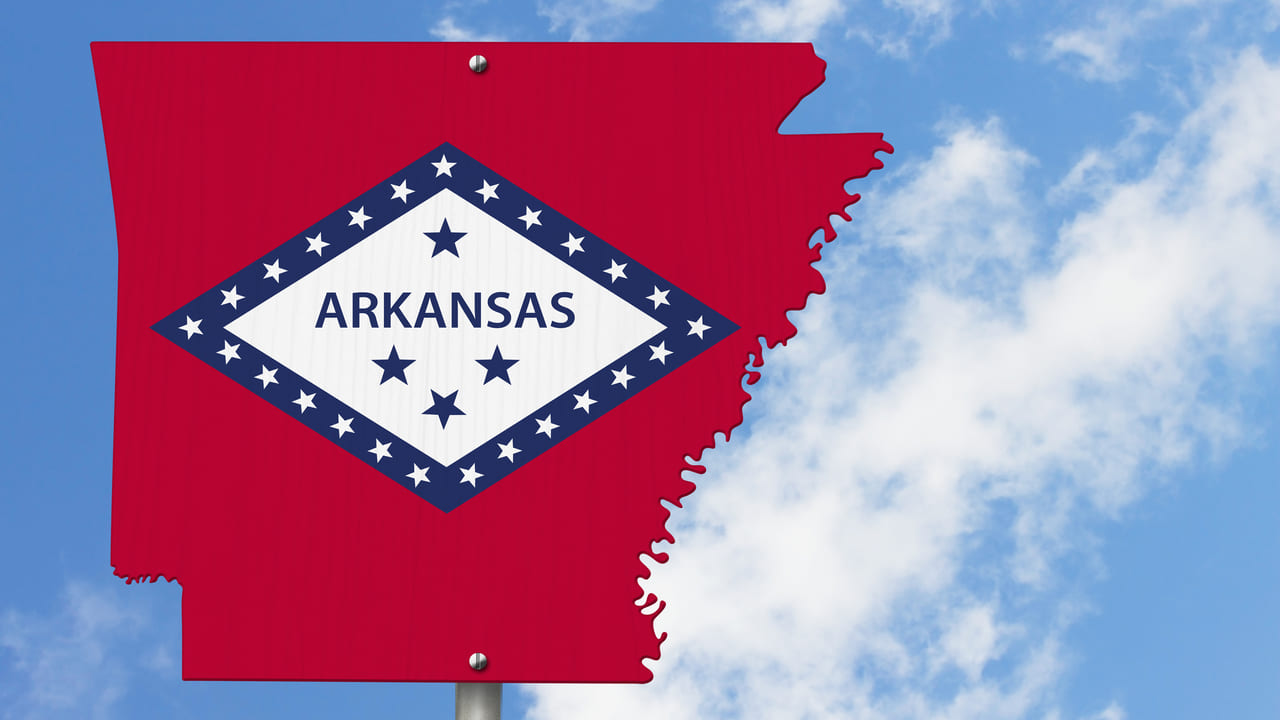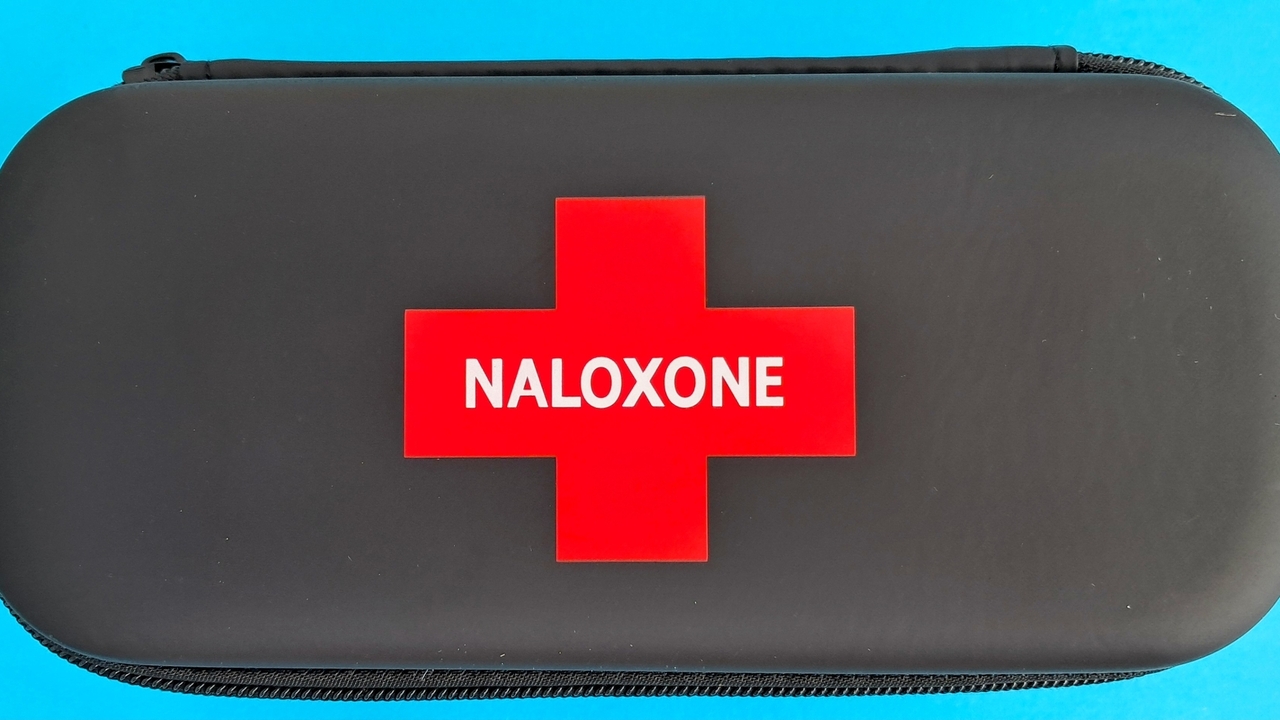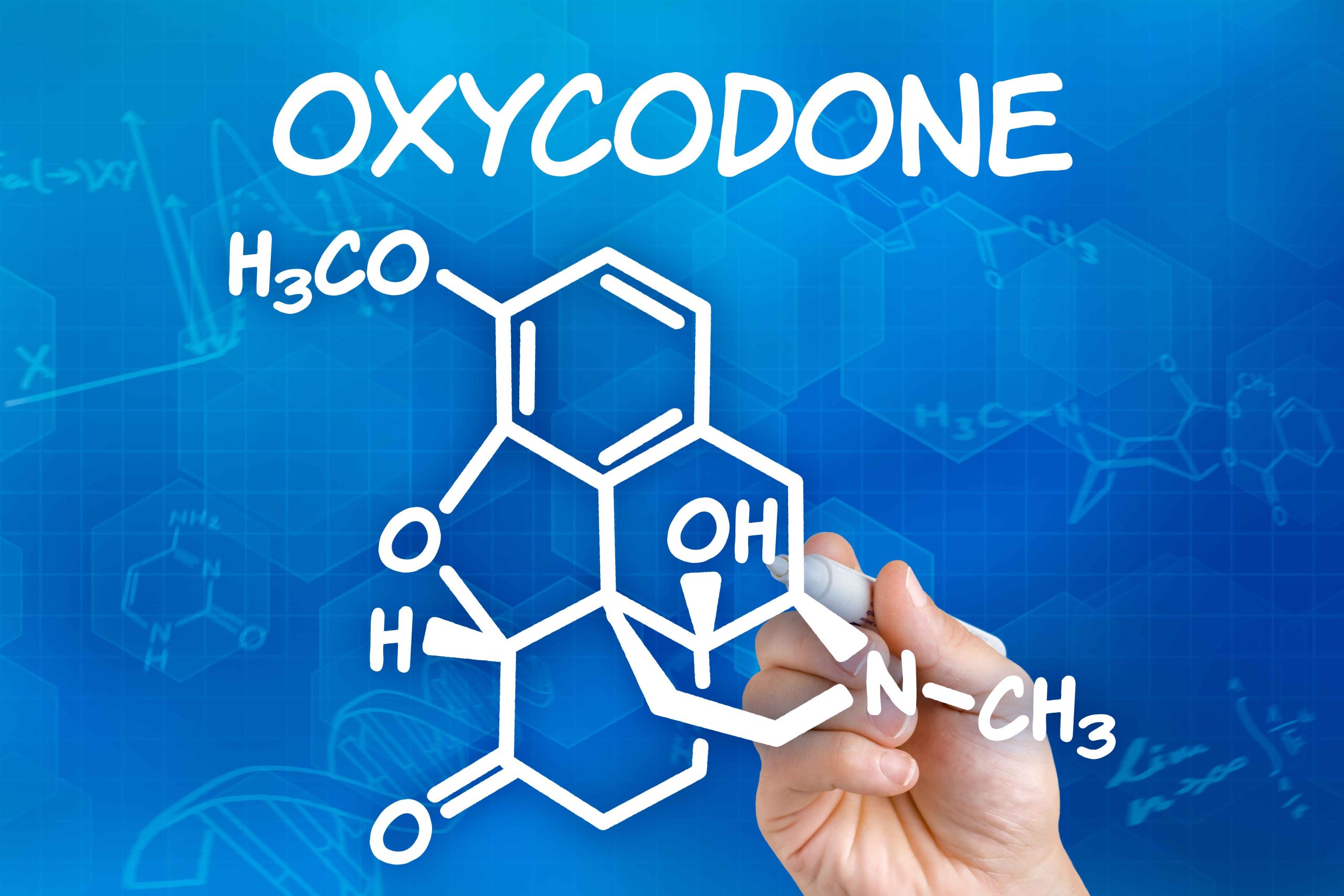
Charleston County Public Schools has just received $500K in opioid recovery grants to mitigate the impact of the addiction crisis on the district’s students. The funds were awarded by The Public School Districts’ Opioid Recovery Trust (PSDORT) and will be used to support opioid addiction education and prevention in district schools.
Charleston County is one of 39 public school districts nationwide to receive the award, according to reports.
The Impact of Opioids on Charleston County Students
The effects of the opioid crisis reach far and wide. It’s not just something dealt with in counseling sessions or addiction treatment centers. While most people understand opioid use affects life at home, what most of us never see is the impact on children at school.
Children in Charleston County who are victims of the opioid crisis will be getting more support thanks to the nearly half million dollar grant. More than 200 school districts across the country applied for funding, but fewer than 40 received grants. It’s a big win for Charleston County students and the entire state of South Carolina.
Expanding Substance Use Prevention Efforts
The current substance use prevention programs will get a makeover, including updated classroom materials and teacher training. Teachers will attend opioid crisis specific training to learn how to work with students who are impacted by addiction, including those who have experienced drug use within the home or family.
Students at every grade level are at risk and the expanded programs will include even more grade appropriate activities and resources. There’s nothing like real life stories to inspire learning and guest speakers will be invited to talk about their personal recovery experiences.
Focused Care for Vulnerable Learners
You’ve seen the news stories but you likely don’t realize that behind every opioid crisis statistic is a child trying to find their footing. Children are the most vulnerable victims of this crisis, with many losing family members. It’s not uncommon for these kids to also experience gaps in school attendance.
PSDORT grant money will go toward helping students who are trying to deal with not only the loss of a parent or loved one, but loss of learning. Funding of special education services for children affected by neonatal opioid exposure is also planned, ensuring care for students with the greatest needs.
Improved Mental Health Awareness
The trauma and stigma linked to opioid use have created a growing need for mental health support in schools. Charleston County students will benefit from expanded access to these services through grant funding with a focus on reducing stigma, and support for healing through trauma informed programs.
Efforts will focus on the overall well being of every student, recognizing that health and growth are closely tied to the family and community. That’s why parents and community members will be invited to participate.
Where Schools and Community Meet
In the spirit of shared commitment, Charleston County schools will continue collaborating with two of their largest supporters: Medical University of South Carolina and Wake Up Carolina. Funds will also go toward creating new community partnerships.
If you or someone you care about is struggling with opioid use, local help is available. Find a Narcotics Anonymous meeting near you or call 800-934-1582(Sponsored) today.

If you think the opioid epidemic is only a problem for younger generations, think again. Adults 65 and older are facing growing risks as senior opioid overdose deaths continue to rise. According to a recent study, fatal overdoses among seniors increased by 9% in just the last eight years. The majority of fatalities stemmed from the dangerous cocktail of fentanyl combined with stimulants.
The research was presented at the ANESTHESIOLOGY annual meeting and used data from the Centers for Disease Control and Prevention (CDC). Seniors are frequently overlooked when it comes to opioid studies and yet they’re part of the rising surge of drug overdoses taking lives across the nation.
Why Seniors Are at Higher Risk
Why are these groups more vulnerable to opioid overdose events? One reason is that many of them may already have chronic health conditions that affect them. The epidemic has happened in stages, with the beginning being prescription medications in the 1990s. Then came heroin, fentanyl, and now, fentanyl mixed with stimulants such as cocaine. This fourth phase is where older adults have been impacted most.
Over 400,000 death certificates were analyzed between 2013 and 2023 for the study. All of them listed fentanyl as the cause of death. The rise in fentanyl related overdoses among seniors seemed to start in 2015 and saw a noticeable spike in 2020.
How to Prevent Senior Opioid Overdoses
The study illustrates many findings, including the incidence of drug sharing among older adults, the need for improved patient monitoring when prescribing opioids, adjusting perioperative planning for this age group, and using clear labeling practices.
Although the trends are daunting, there are still steps within our control that may help decrease the chances of these occurrences. Knowing this group is also vulnerable can shine a light on the need for education and proper maintenance for prescriptions. One of the goals is to minimize the use of this drug as a pain control method and to look for safer ways to treat older adults.
If you or a senior you love is struggling with opioid addiction, support is available.
Find local Narcotics Anonymous meetings or senior focused recovery programs in your area or call 800-934-1582(Sponsored) for immediate assistance.

Recent data from FAIR Health’s Opioid Tracker revealed how the opioid crisis has affected the nation, particularly in the South. Arkansas opioid addiction rates were the fourth highest in the U.S between 2021 and 2024. Tennessee ranked first in the nation with 1,147 cases. West Virginia and Kentucky followed.
Arkansas Opioid Addiction Rates Spike After COVID-19
The number of national opioid use disorder cases soared almost 40% between 2021 and 2024. The U.S saw a 39.8% increase from 386 instances per 100,000 to 539 per 100,000.
In 2024 the number of residents battling opioid addiction in Arkansas was over twice the national average. With a rate of 1218 diagnoses per 100,000 Arkansans. An estimated 51% of those diagnosed were women.
The majority of persons diagnosed with OUD were between the ages of 31 and 50.
These findings highlight the crucial need for assisting those in need of addiction treatment services. They also show how the opioid crisis has infiltrated communities across the U.S., regardless of income level and demographics.
The Role of Telehealth in Arkansas Opioid Treatment
Data also highlighted shifts in settings where professionals treat opioid use disorder. Telehealth services increased from 4.3% in 2021 to 6.3% in 2024. The number of in office treatment claims decreased from 43.8% in 2021 to 38.6% in 2024. Care in outpatient facilities also increased from 1% to 9% between 2021 and 2024.
These shifts show how technology and new care models are helping more people safely begin recovery and manage withdrawal symptoms remotely.
Arkansas Invests in Fighting Opioid Addiction
Arkansas is taking steps to remedy the devastating effects of the opioid crisis after receiving millions in vaping and opioid settlement funds. Attorney General Tim Griffin plans to fund “one pill can kill” campaigns across Arkansas college campuses.
The Arkansas Children’s Hospital also announced the building of a new $75 million research center in Little Rock this summer. This facility will be dedicated to studying the impact of opioid addiction on parents and children.
If you or someone you love is struggling with opioid dependency, help is available. Call 800-934-1582(Sponsored) today or explore NA meetings to connect with people who understand what you’re going through and can support your recovery journey.

Iowa has recently launched the Save a Life With Naloxone initiative aimed at fighting the ongoing opioid epidemic through increased access to naloxone (Narcan). Naloxone is a fast-acting medication that can reverse the effects of an opioid overdose and save lives when used quickly.
The state of Iowa stresses that the safety of the state’s communities is at the forefront of this continued effort. The program ensures that naloxone is widely available to residents, first responders, schools, and community organizations to prevent overdose deaths and promote recovery.
How to Get Naloxone in Iowa
Through the program, eligible organizations can request naloxone products for people at risk of an opioid overdose. There are two different application tracks for organizations. One is for law enforcement agencies and non-EMS regulated fire departments, and the other is for Iowa organizations, businesses and schools.
Since NARCAN is now available over the counter, many community organizations and secondary distributors, such as school districts, healthcare providers, health departments, fire departments and law enforcement personnel, can apply to distribute it locally.
Secondary Distributors
Some secondary distributors can currently dispense the prescription medication Kloxxado, another FDA approved naloxone medication. However it should be noted that the Iowa Health and Human Services will stop supporting allocation in November of this year, focusing on future efforts on expanding naloxone and community education.
To simplify the process, Iowa HHS provides a public FAQ document outlining eligibility, distribution requirements, and best practices for overdose prevention.
The Bigger Picture
Naloxone programs like this one play a critical role in the nation’s opioid overdose response strategy. According to the CDC, more than 80,000 people in the U.S. died from opioid-related overdoses in 2024. Increasing naloxone access can mean the difference between life and death while individuals seek long term recovery through treatment or Narcotics Anonymous (NA) meetings.
Find Support Near You
If you or someone you love is struggling with opioid use, you are not alone. Search for NA Meetings near you on Narcotics.com or call 800-934-1582(Sponsored) today to take the next step toward recovery.

Native Appalachian author Barbara Kingsolver has opened a new center focused on women’s opioid recovery in Virginia. Kingsolver won the 2023 Pulitzer Prize for Demon Copperhead, a novel about Appalachia’s opioid addiction crisis.
Now she is opening Higher Ground Women’s Recovery Residence in Lee County, Virginia, which provides a stable home for women who are learning to live sober after release from incarceration or inpatient substance abuse treatment centers.
Witnessing the Devastation
As a native Appalachian who lives on a farm in southwestern Virginia, Kingsolver knows firsthand how the national opioid epidemic “has changed so much of the texture of this place.” She has witnessed the devastation wrought by the pharmaceutical industry’s targeting of central Appalachia with sales of falsely proclaimed addiction-resistant prescription painkillers.
In the author’s words, “They came to harvest our pain when there was nothing else left.”
Desperately Needed Recovery Services
In the process of researching for Demon Copperhead, Kingsolver delved deeply into the real life stories of individuals struggling with addiction and the loved ones who are often their caregivers.
The facility Kingsolver has opened in response to those stories, funded by proceeds from her Pulitzer-winning novel’s overwhelming success, offers desperately needed services to a region that has been ravaged by the opioid crisis.
Higher Ground fosters a safe and welcoming environment for healing from substance abuse, with private and semi-private bedrooms, a shared kitchen and a communal den. Perhaps most importantly, the center has helped to create a tight-knit support system of women who understand each other and the destructive impact of addiction on families and communities.
Figuring it Out Together
This past June, an audience gathered at the Lee Theatre in Pennington Gap, Virginia to celebrate the center’s opening. When Kingsolver invited current residents onstage to share their experiences, they were more interested in discussing the bonds they have forged with housemates and staff members.
35-year-old Syara Parsell, one of the center’s first residents, has already found work and enrolled in college classes. She says, “Together, we figure it out.” As Kingsolver says, in the end, the benefit to residents of the center “is not just sobriety, but belief in themselves.”
Finding NA Meetings
One of the best tools for achieving long-term recovery is meeting with like-minded people who are also sober.
You can find NA meetings in your area or call 800-934-1582(Sponsored) today.

To eradicate the opioid crisis, federal response efforts are intensifying as agencies ramp up resources to combat the Dark Net and international sources of illicit drugs.
The U.S. Immigration and Customs Enforcement (ICE) has noted that the rise of e-commerce has made the battle against opioids more difficult. Anyone with internet access can successfully place orders from their living rooms without going into the streets.
ICE personnel cite the 200,000 Americans who have died from fentanyl overdoses. Fentanyl is 50 times more lethal than other major opioids—50-100 times deadlier than heroin and morphine. Experts note that just one kilogram of fentanyl can produce over a million doses.
To combat the opioid crisis, federal agents like Greg Nevano are spearheading the charge. He is ICE’s Homeland Security Investigations (HSI) Deputy Assistant Director of the Illicit Trade, Travel and Finance Division. Nevano warns that drug users nowadays “get their fix just by ordering it online for much cheaper and get a more potent dosage.” The drug pusher on the street, whom the law would normally target, is largely a thing of the past.
Fighting the Opioid Crisis
One thing has become clear as agency personnel battle this epidemic. Law enforcement can’t handcuff the country out of their opioid addictions. An educated public and an engaged community are crucial partners to tackle trafficking head on.
President Donald Trump has been active in combatting the crisis. He declared illicit opioids a national public health emergency back in October 2017. The president directed ICE to increase the number of agents and resources on the fentanyl field and to stop the flow of drugs into the country.
An International Reach
The rise of fentanyl in the United States can be traced back to China’s chemical and pharmaceutical industries. These offshore companies manufacture copious amounts of drugs to export to the west with little regulatory oversight. ICE’s role is to cut off the illicit opioid trafficking from China and other nations from reaching American shores.
However, state and local officials don’t always have funding and resources to sustain the scope of the war against opioids. Here is where federal partners like HSI are brought in. Tripling HSI resources in heavily hit regions like Ohio helps law enforcement by providing crucial operational support and experts. The more resources put toward battling the crisis, the better the outcome for communities most affected by opioids.
What’s Next?
To battle the opioid crisis, federal response is vital. HSI personnel team up with state and local partners to maximize its impact on transnational crime organizations operating within U.S. borders.
As is often the case, the solution to the problem lies in banding together as a nation to finally eliminate opioids from local communities.
Find NA Meetings Near You
As the government response continues to cut illicit opioids from their source, users can also do their part to turn their backs on drugs.
Take the first step by looking for NA meetings in your area or call 800-934-1582(Sponsored) today.

Fentanyl has overshadowed much of the opioid crisis in the public eye for the past several decades. But a growing number of new synthetic opioids called nitazenes have recently taken the American illicit drug market by storm. One report has noted that nitazenes have the same potency as fentanyl and in some cases are even higher.
Expanding the War on Fentanyl
President Donald Trump signed the HALT Fentanyl Act in July 2025 to classify fentanyl as a Schedule 1 drug. This strengthens the punishment for those convicted in fentanyl trafficking. But some experts contend that putting more focus and resources towards stopping fentanyl spread could lead to other drugs emerging to fill the void.
Dr. Nabarun Dasgupta of the Gillings School of Global Public Health in North Carolina tracks nitazene use. He states that the focus on fentanyl has encouraged the black market to switch to alternatives that are easier to trade and can hide in the shadows. Dasgupta’s team has detected nitazenes across 15 states with the largest concentration in Tennessee.
Taking a Closer Look
Alex Krotulski of the Center for Forensic Science Research and Education has done similar work. One problem with detecting nitazenes is that the technology required to identify them is not standard in autopsies, meaning nitazene-related deaths are likely underreported. Krotulski also contends that the United States lacks a “uniform way of tracking drugs” so tracking nitazines is difficult.
Sheila Vakharia is a national expert on harm reduction. She agrees there was “no one consistent supply chain across all 50 states.” Vakharia also explains that new drugs typically start within one city and then spread to rural areas that lack tracking measures.
Finding a Path Forward
The current administration has recently requested cuts for the Centers for Disease Control and Prevention in 2026. On the chopping block is the National Center for Injury Prevention and Control.
Dasgupta warns that cutting programs would further impede the ability to track and detect novel drugs. Nitazene usage is nowhere near the same level as the fentanyl trade, but concerns grow that the opioid epidemic will continue to grow in a new and potentially more lethal direction. Dasgupta says that “an unregulated drug supply is always going to be changing.”
If you or a loved one is impacted by opioids or other narcotics, there’s hope.
Check out local NA meetings on Narcotics.com or call 800-934-1582(Sponsored) .

Naloxone Texas, a statewide program that’s part of the University of Texas at San Antonio’s Be Well Institute on Substance Use and Related Disorders to prevent opioid overdoses in Texas, is deploying a new service on Texas college campuses this fall. It’s aimed at universities and colleges throughout the Lone Star State and offers overdose response training and free naloxone for students, staff, and faculty.
Naloxone Can Save Lives
Naloxone is the generic of Narcan and rapidly reverses opioid-related overdoses. The drug can save a life when administered immediately after an overdose. The drug is similar to an EpiPen (epinephrine auto injector) or heart defibrillator in that trained bystanders can offer quick and effective life-saving measures before first responders arrive.
In response to a growing opioid crisis in Texas that inordinately affects young adults, Naloxone Texas will target community colleges, private and public universities, and trade schools.
Dr. Tara E. Karns-Wright is an assistant professor in the Department of Psychiatry and Behavioral Sciences at UT San Antonio and director of Naloxone Texas. She expressed gratitude to the Texas Legislature and Texas Health and Human Services for funding the effort to provide every college campus with the resources and knowledge to respond to opioid overdoses.
“We’re making this life-saving medication more accessible and helping everyone become first responders in moments that matter most,” she said.
How Naloxone Texas Works
Naloxone Texas will be participating in back-to-school events across the state. These include hosting events at campuses in San Antonio, Austin, and Houston. Local staff and students can sign up for free naloxone kits at these events. They can ask questions and learn how to use the kits to prevent and treat overdoses.
In addition to opioid overdose reversal kids, Naloxone Texas also makes available the following services to enrollees:
Evidence-based training services: There are virtual, on-demand teaching modules where participants learn to identify and respond to opioid overdoses. They can also understand the varied approaches to addiction treatment in general and how therapies are effective.
Naloxone distribution: Individuals and organizations may request free kits in bulk with an emphasis placed on areas where individuals are at high risk of overdose, as determined by county data.
Referrals to support services for adolescents and adults through the Be Well Texas Provider Network and the Be Well Clinic. Both offer in-person and virtual care for substance use issues. Referrals may also be given to NA recovery meetings throughout Texas.
Campus organizations, as well as student health services and college administrators, are urged to schedule customizable training workshops and request free naloxone kits by signing up here.
If you or someone you love is struggling with drug addiction, there is hope. Narcotics.com lists NA meetings around the nation, including online and virtual NA meetings.
For immediate support, call 800-934-1582(Sponsored) today.

Lily never planned on becoming addicted to oxycodone. Instead, she’d planned on running a marathon. But her life took an unexpected turn when she tripped during a morning jog and injured her knee. The pain was intense, and her doctor prescribed oxycodone to manage that pain.
Unfortunately, the oxycodone wasn’t enough to control Lily’s agony. She took more than the recommended dosage several times, just to take the edge off. And even though she told herself she had nothing to worry about, Lily really liked the feelings of euphoria the drug provided. She couldn’t run anymore, so she was feeling depressed. She secretly welcomed the opioid high.
Oxycodone Addiction and Opioid Detox
Lily started taking more oxycodone pills – and she took them with increasing frequency. She needed more of the drug in order to make her feel the desired high. Then one day, she ran out of pills.
That’s when Lily got sick.
Her muscles cramped up, she had a headache, she felt nauseated, and she was sweating profusely. She searched her symptoms online and quickly realized she had become physically dependent on the opioid painkiller.
The steady supply of opioids was no longer there, and her body’s systems were reacting with a fierceness in the drug’s absence. Lily understood in that moment she experiencing oxycodone withdrawal.
Symptoms of Oxycodone Withdrawal
Some of the typical symptoms people experience when they quit oxycodone include:1
- Muscle cramps
- Vomiting and nausea
- Diarrhea
- Cold and hot flashes
- Anxiety
- Trouble sleeping
- Sweating
- Headache
- Watery eyes and nose
Note: It is possible to become physically dependent on oxycodone when you take it as prescribed. Your body gets used to the presence of the drug, so when you stop taking oxycodone, you can experience withdrawal.2
What Happens After You Quit Oxycodone?
How long do the withdrawal symptoms last once you quit oxycodone? The process usually unfolds in the following timeline:
- Days 1-2: Initial withdrawal: Symptoms usually start 8-12 hours after the last dose of oxycodone.
- Days 3-5: Intensified withdrawal: Symptoms are usually at their worse during this time. Muscle aches are common, along with shaking and cramps.
- Days 6-7: Psychological withdrawal: At this point, physical symptoms lessen, and psychological symptoms grow stronger. Depression and anxiety are common.
- Days 8 and beyond: Detoxed: After eight to 10 days, oxycodone has usually been purged from the body (detoxed). Physical symptoms are gone. However, psychological addiction may still be present. If this is the case, you should seek additional treatment.
Is it Safe to Stop Oxycodone Cold Turkey?
Because she ran out of pills, Lily abruptly stopped taking oxycodone. Quitting cold turkey like this can produce very distressing symptoms, both physical and emotional.
For people who have other health conditions, the body’s physical reaction can cause serious issues. Even in healthy individuals, severe vomiting and diarrhea can cause life-threatening dehydration. And many people start using the drug again in a desperate attempt to make the oxycodone withdrawal symptoms stop.
To prevent this unhealthy cycle, it is usually best to taper off oxycodone as part of a professional opioid addiction treatment program. This is what Lily decided to do.
What’s the Process of Weaning Off Oxycodone?
Lily consulted with her doctor to develop an oxycodone tapering plan that worked for her. This plan would slowly wean her off the drug, minimizing withdrawal symptoms and helping Lily adjust to daily life without oxycodone.
Tapering plans typically include the following important steps when weaning off oxycodone:1
- Flexible approach: The plan for tapering off oxycodone must consider the person’s risk, preferences, and goals.
- Initial decrease: The amount of the dosage decrease is less important than successfully achieving some form of initial decrease.
- Dose and interval: Tapering off oxycodone involves two separate processes: dose amount and the interval between doses. One or both can be adjusted throughout the weaning process.
- Slow progress: A slow taper is 5-10% dose reduction per month. This may be necessary if you’ve been using oxycodone for more than a year. A faster taper decreases doses by 10% per In extreme cases, where there is medical risk due to other conditions, a decrease of 30-50% may be appropriate. But this requires close monitoring.
- Scheduled dosing: If possible, it’s good to continue with the same dosing schedule. For example, if you’re used to taking prescribed oxycodone in the morning, continue to take it then.
- Pauses: Putting the tapering process on pause may be appropriate at some point in the process. This break gives you time to adjust to the new dosage and learn new coping skills.
- Progress: Tapering off oxycodone is considered a success as long as you’re making progress by reducing your oxycodone use.
- Support: During the weaning process, social support, mental health care, and physician supervision are important. Lily began seeing a counselor to help with her anxiety and depression.
- Healthy habits: Lily also benefited from developing ways to manage pain and maintain a healthier lifestyle. These included:
- Good sleep habits
- Healthy nutrition
- Physical activity
- Non-opioid pain medications
Medical Detox Helps You Successfully Quit Oxycodone
Sometimes, medications are used to help people detox from oxycodone. These FDA-approved treatments can help reduce oxycodone withdrawal symptoms and cravings. A healthcare provider prescribes the medication and closely monitors the patient’s progress. For some, this medical support can be the key for how to quit oxycodone.
Medical detox may involve one or more of the following medications:
- Buprenorphine: This is prescribed for moderate to severe oxycodone withdrawal. It reduces the person’s cravings for oxy and provides relief for withdrawal symptoms.3
- Methadone: This medication also reduces cravings and alleviates oxycodone withdrawal. It is used for medical detox from opioids that are longer acting, such as morphine.3
- Suboxone: This medication is a combination of buprenorphine and naloxone. It prevents cravings and blocks the intoxication effects of other opiates.4
- Other Medications: There are a number of drugs used during the detox process to treat withdrawal symptoms. Healthcare providers may prescribe medication to treat insomnia, nausea, diarrhea, and abdominal cramps. These may include temazepam, metoclopramide, and propantheline.3
Sources:
- Sarah.Rinn,. (n.d.). Tapering and discontinuing opioid use. Minnesota Opioid Guidelines. Retrieved November 29, 2023, from https://mn.gov/dhs/opip/opioid-guidelines/tapering-opioids/
- Doj/dea. (n.d.). Drugs of Abuse, A DEA resource guide (2020 edition). Retrieved November 30, 2023, from https://www.dea.gov/sites/default/files/2020-04/Drugs%20of%20Abuse%202020-Web%20Version-508%20compliant-4-24-20_0.pdf
- Withdrawal management. (2009, January 1). NCBI Bookshelf. https://www.ncbi.nlm.nih.gov/books/NBK310652/
- Grinspoon, P. (2018, March 20). 5 myths about using Suboxone to treat opiate addiction. Harvard Health. https://www.health.harvard.edu/blog/5-myths-about-using-suboxone-to-treat-opiate-addiction-2018032014496

Suboxone withdrawal is worse than heroin withdrawal.
No one has ever been able to successfully taper off Suboxone.
Tapering off Suboxone is something that’s shrouded in both mystery and myth. While the thought of stopping the medication certainly generates a bit of anxiety, the unknowns and “what ifs” are truly the drivers of fear. What will it feel like when your Suboxone dose is decreased? Will it feel like you’re in withdrawal 24/7? Will anyone help you if the taper is going too fast?
By answering the what ifs and shining a light on the unknowns, tapering off Suboxone suddenly becomes a lot less frightening. Once the fear is under control, you’re free to play a leading role in your own recovery process.
What is a Suboxone Taper?
 First thing’s first; let’s talk about what a Suboxone taper is and why it’s so important. Tapering is defined as gradually discontinuing or reducing the dose of a particular drug required by a patient over a prolonged period of time. Pay close attention to those last six words: “…over a prolonged period of time.”
First thing’s first; let’s talk about what a Suboxone taper is and why it’s so important. Tapering is defined as gradually discontinuing or reducing the dose of a particular drug required by a patient over a prolonged period of time. Pay close attention to those last six words: “…over a prolonged period of time.”
The process of tapering is, by definition, meant to be slow.
Suboxone is an FDA-approved medication that has changed the way opioid addiction is treated. Its unique combination of two distinctive chemical compounds – buprenorphine and naloxone – give it the ability to virtually eliminate opioid withdrawal symptoms and minimize the risk of abuse. It takes time to recover from opioid use disorders, so most patients take Suboxone for an extended period of time.
Since buprenorphine is a partial opioid agonist, it does carry a risk of dependency. Given this risk, when you’re ready to stop taking Suboxone, a supervised taper is always recommended.
Trying to quit “cold turkey” without assistance can be dangerous and cause painful withdrawal symptoms, both of which increase your odds of relapse. A supervised taper, on the other hand, significantly lowers or eliminates withdrawal symptoms and prepares your body for life beyond Suboxone.
What to Expect During a Suboxone Taper
The road to a successful Suboxone taper begins with open, honest dialogue between you and your clinician. From those conversations, you will work together to develop a plan to reduce the amount of Suboxone you take. The result is a tapering schedule that is highly individualized and focused on your personal needs instead of being focused on adherence to one specific approach.
Your dosage can be lowered a little bit at a time over several days, weeks, or even months. According to the National Alliance of Advocates for Buprenorphine Treatment (NAABT), Suboxone should generally be lowered in increments of 2 mg at a time every few days. Keep in mind, however, this progress relies on your level of dependence and individual experience. If you’re on a well-structured tapering schedule, you should only feel mild withdrawal symptoms for a few days following a reduction in dose.
If, at any point during the taper, your withdrawal symptoms or cravings become more intense, talk to your clinician. He or she can readjust your dose or slow the taper. You may need to go back to a previous dosage level in order to stabilize or increase the amount of time in between dosage reductions.
In some cases, a medication called Naltrexone may be used after you’ve tapered off Suboxone. Naltrexone is an opioid antagonist medication that works by blocking the effects of opioids. When used after the Suboxone tapering process, it offers additional anti-craving properties that can strengthen long-term sobriety. If used before the Suboxone taper is complete, however, Naltrexone can cause precipitated withdrawal.
Getting Help With Your Suboxone Taper
Some people might tell you that getting off Suboxone is impossible – that no one can handle the withdrawals or function without the medication. Thankfully, that isn’t true. With proper treatment and support, you can successfully taper off Suboxone.
